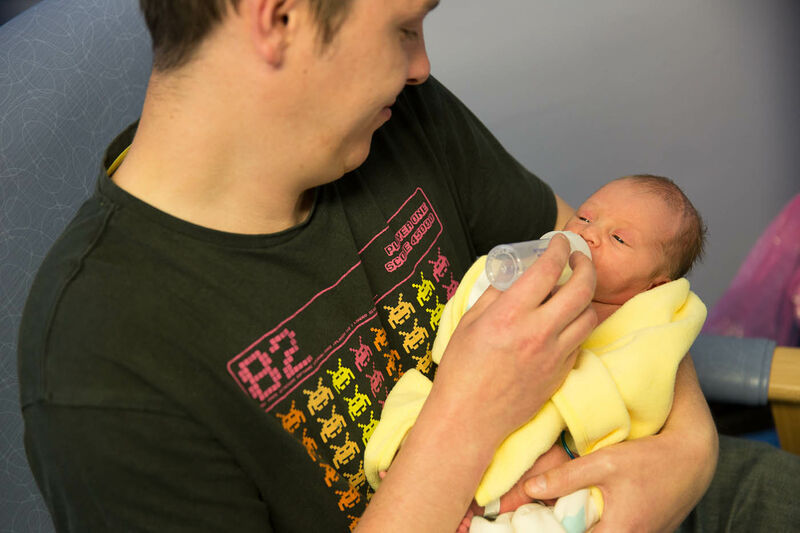Some parents feed their premature or sick baby expressed milk or formula in a bottle. Some babies will transition to bottle feeding after being tube fed.
You may prefer to feed your baby expressed milk and/or formula in a bottle alongside breastfeeding. This is called mixed or combination feeding. If you are thinking about mixed or combination feeding, talk to your neonatal team, feeding specialist, midwife, health visitor or GP.
Like other types of feeding, it is important to recognise the signs that your baby is hungry (feeding cues) before bottle feeding. Your baby may demonstrate early feeding cues by putting their fingers into their mouth, making sucking motions (rooting) and becoming restless.
Your baby will want to be close to you while being bottle fed, so this is a great time to have skin-to-skin. When possible, it is best for you or your partner to give bottle feeds so that your baby can learn with you.
How can I help my baby to feed?
Doing the following while bottle feeding your baby can help them to feed successfully and be more comfortable:
- Make sure you are close to your baby and hold them in the best position suited to your baby, with their head supported. This may be upright or elevated on their side. Some units may advise you to try different positions.
- Offer the bottle when your baby shows feeding cues.
- Gently invite your baby to take the teat.
- Avoid forcing your baby to take the teat or finish the feed.
If the milk comes too quickly, it can be difficult for your baby to coordinate their sucking, swallowing and breathing. A nurse or feeding specialist on the unit will show you teats, bottles and positions that can help your baby to do this more effectively.
Some babies have periods of low oxygen (desaturations) and/or low heart rate (bradycardia) when they are starting to bottle feed or breastfeed. This is normal in some cases and will improve with time, but can be a sign that your baby is not ready for feeding yet. If this happens, it may need to be looked at by a doctor or a speech and language therapist who specialises in swallowing.
Low oxygen and heart rate while feeding can also be a sign of reflux. Reflux happens when some of the partly digested milk or food in the stomach comes back up the tube from the mouth to the stomach (oesophagus). This is common in all babies, but is more common in babies born premature or sick. We have more information about reflux.
Staff on the neonatal unit should support you and show you how to make feeds and clean and sterilise your baby’s bottles (see below). They could also encourage you to bring bottles in from home so that your baby can get used to them. For more help and support with bottle feeding, speak to your neonatal team, feeding specialist, midwife, health visitor or GP.



